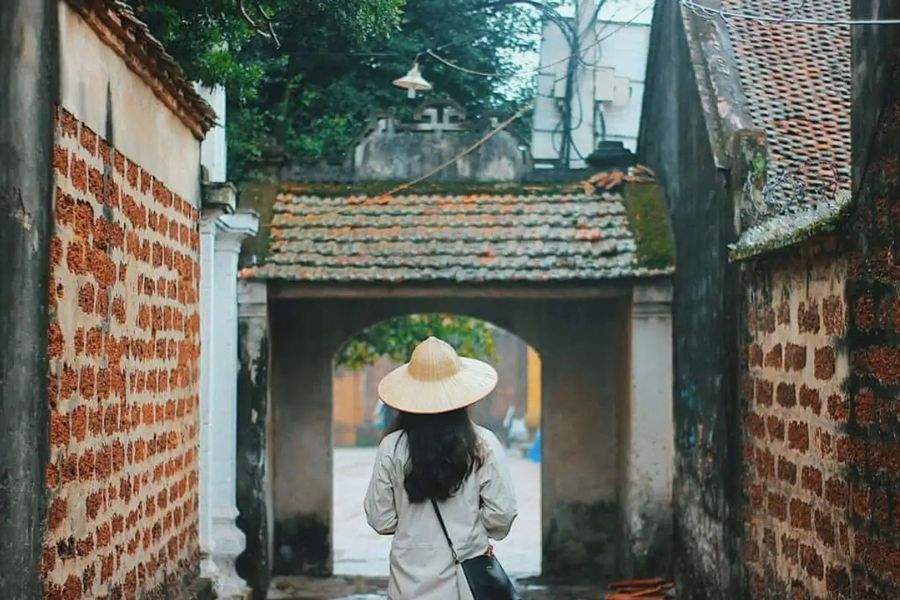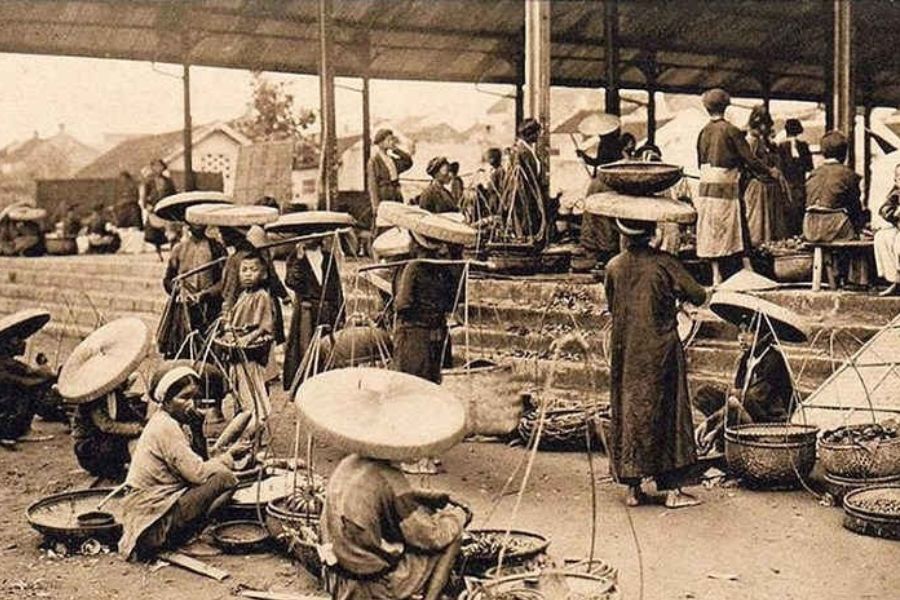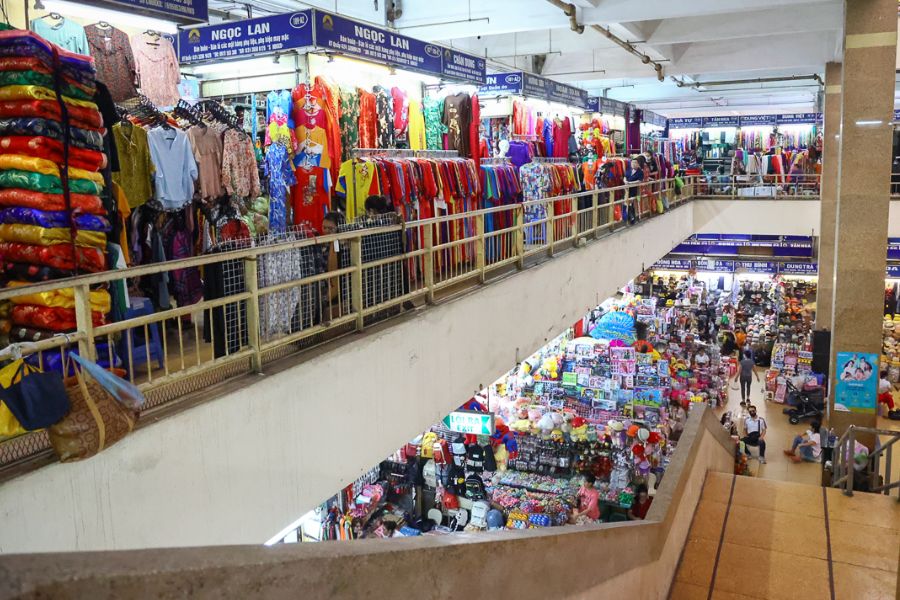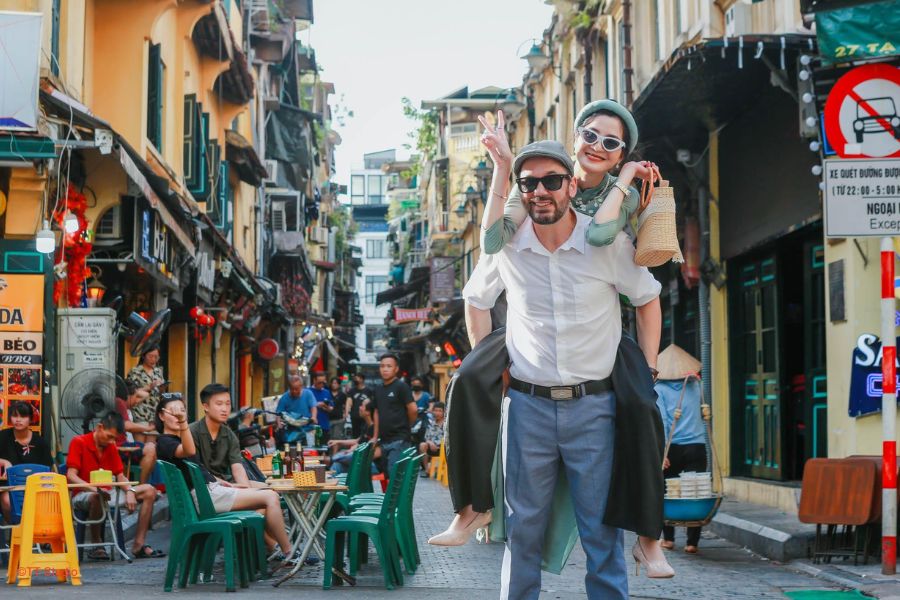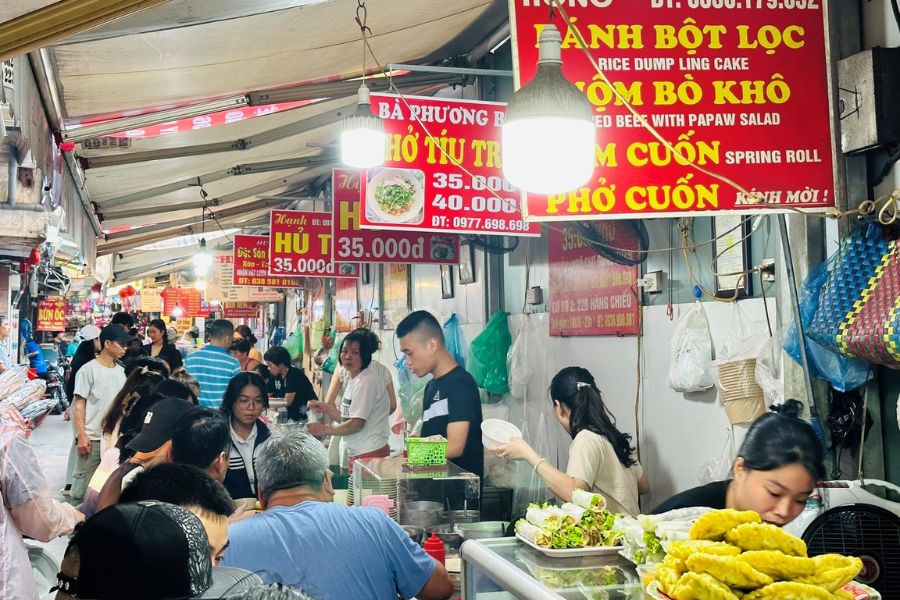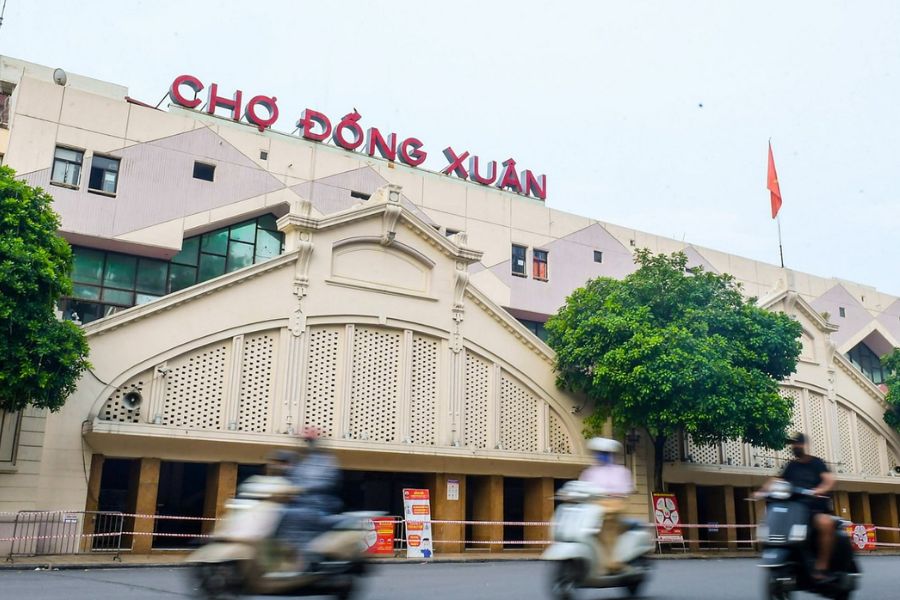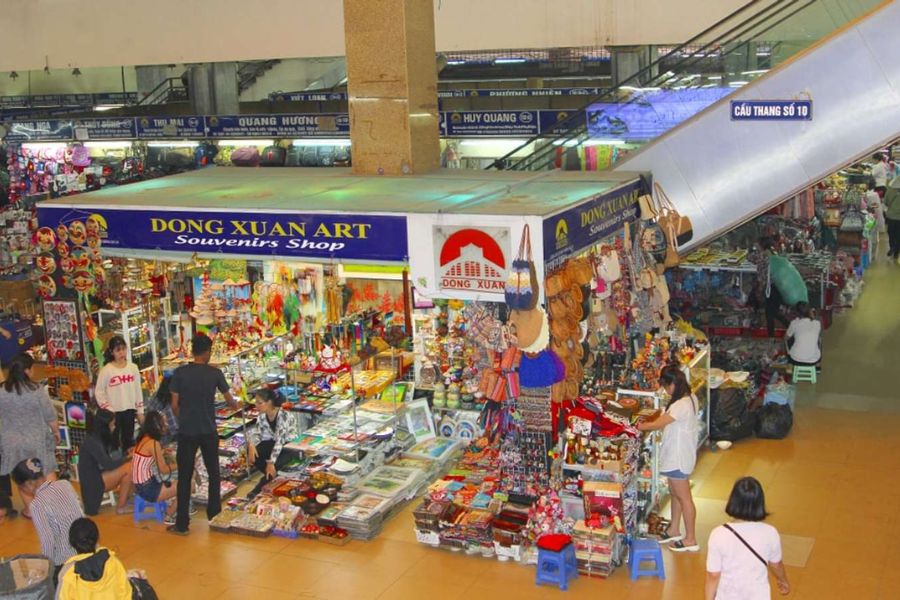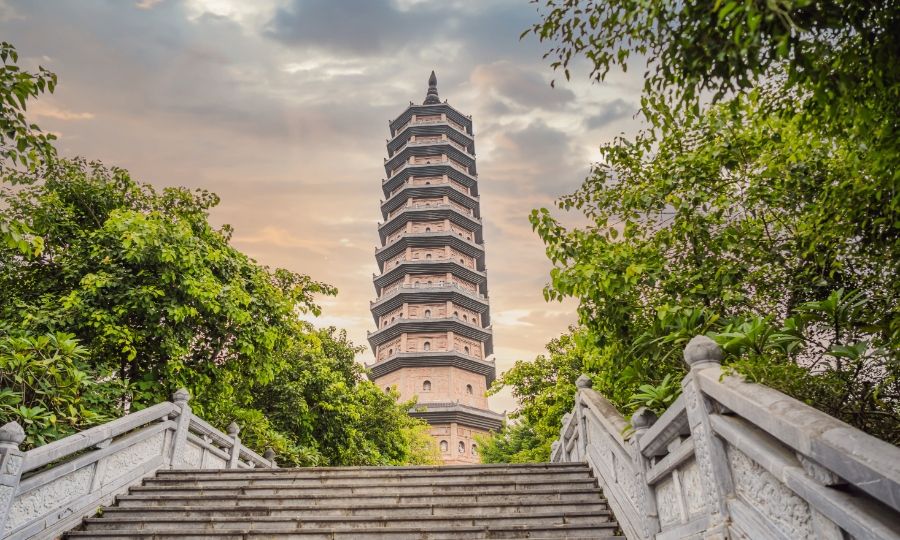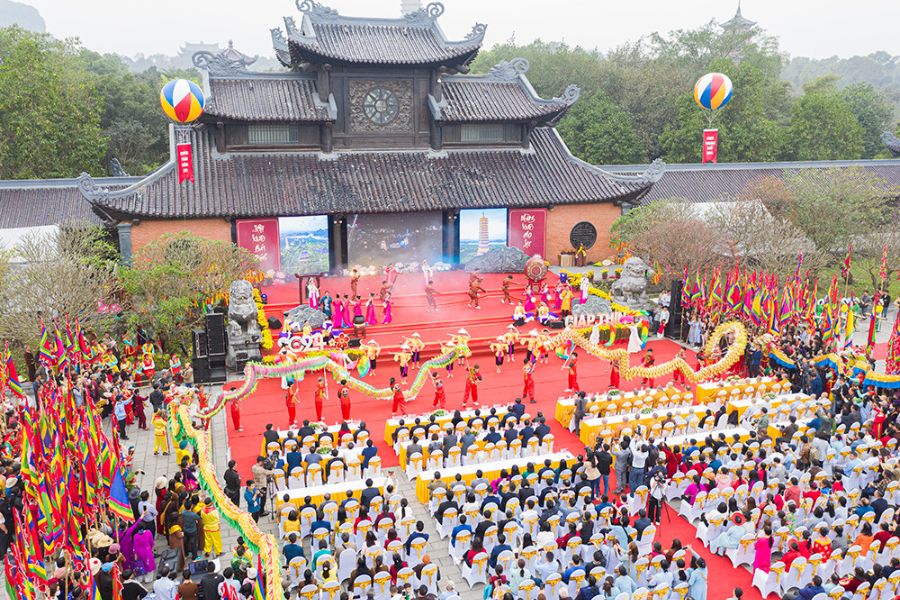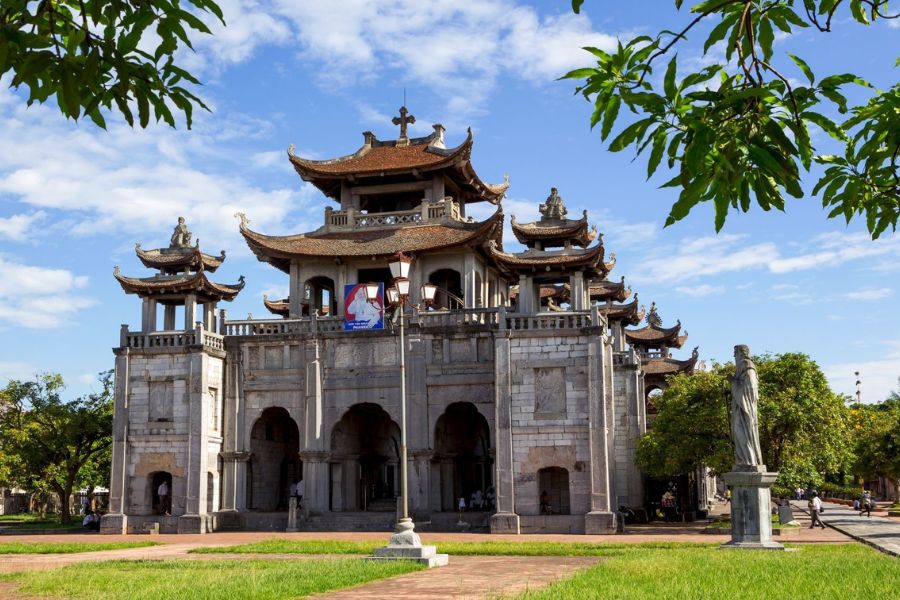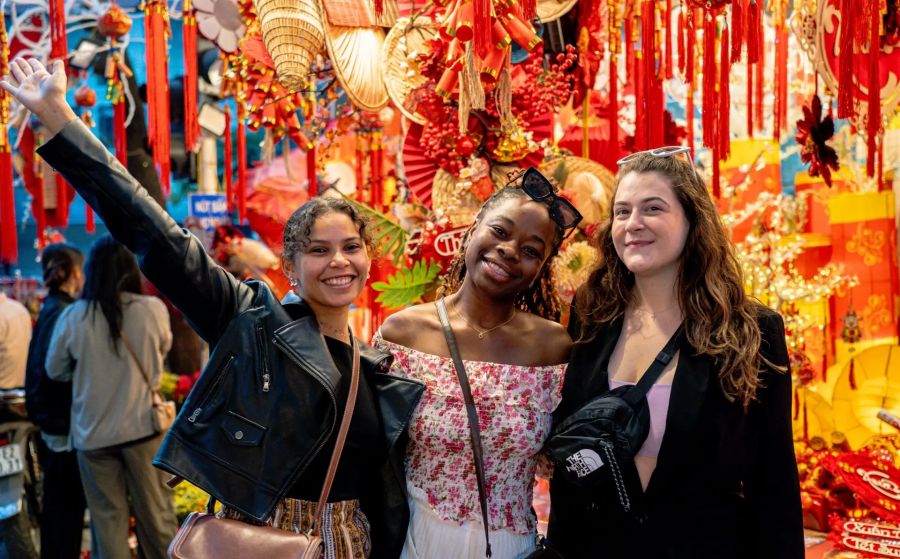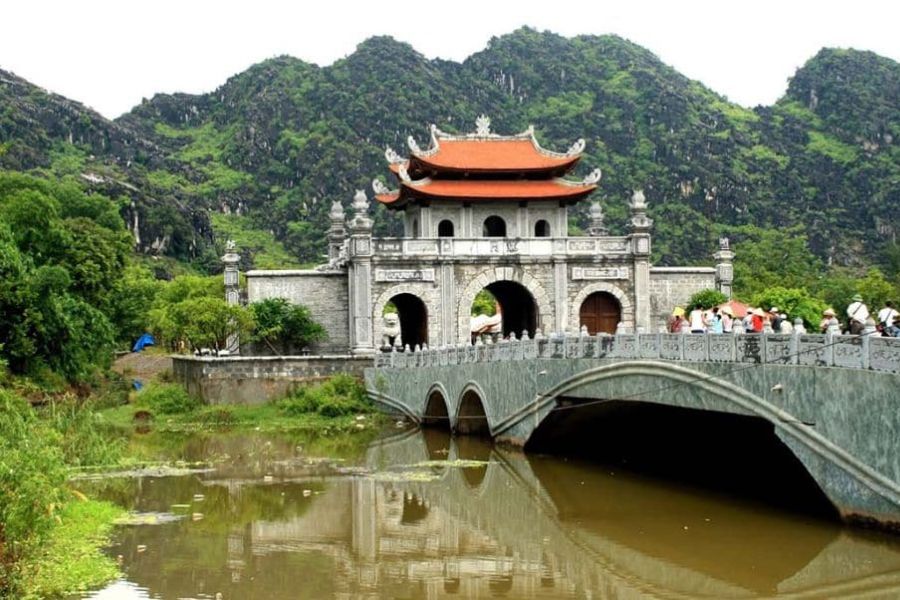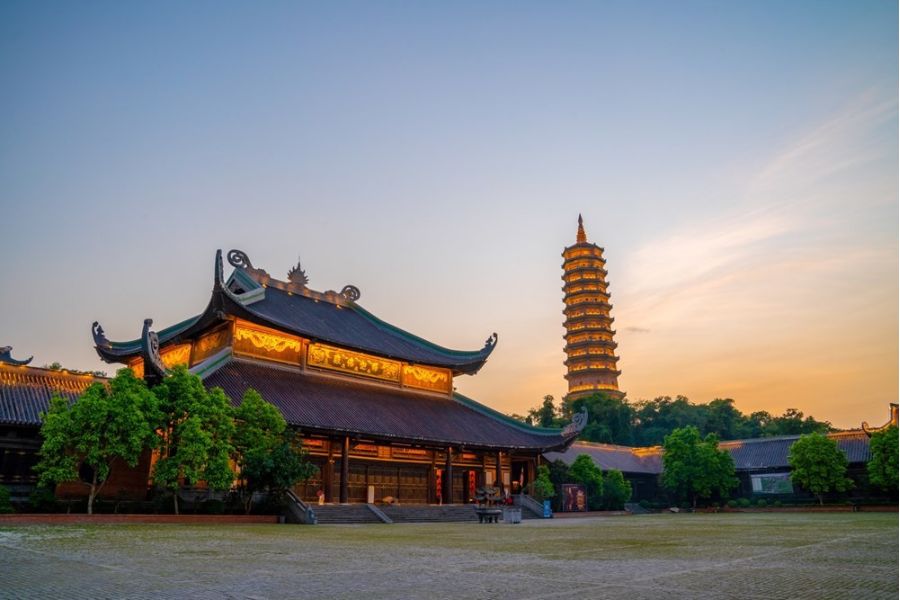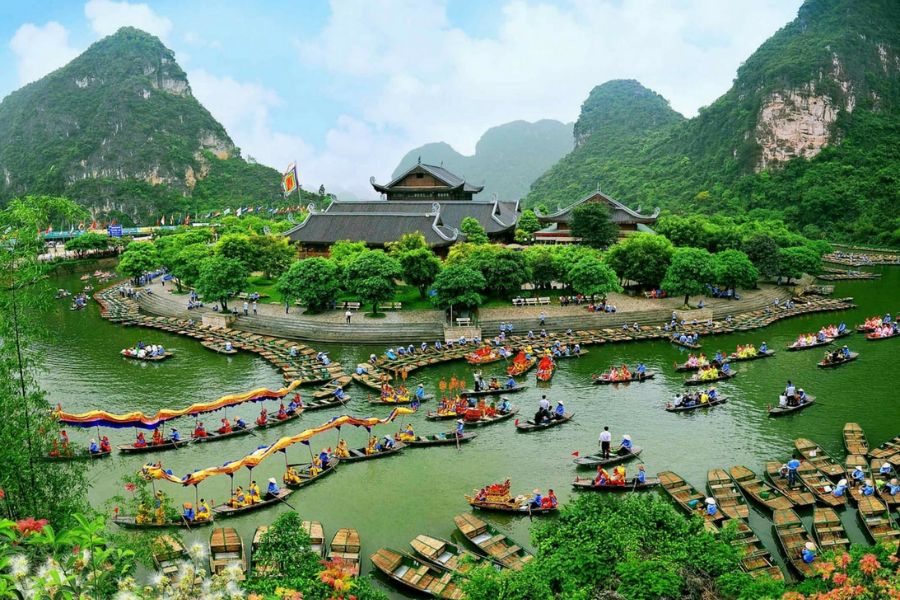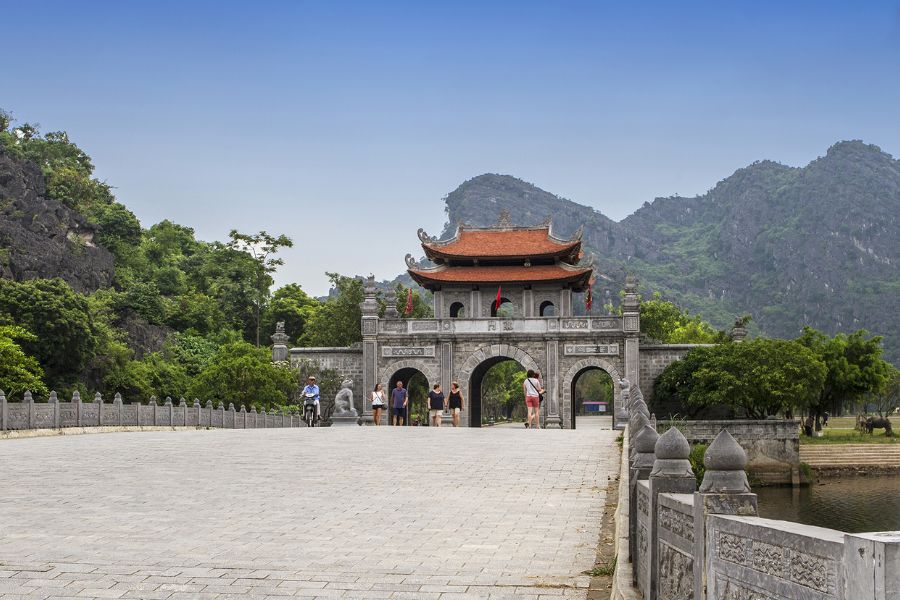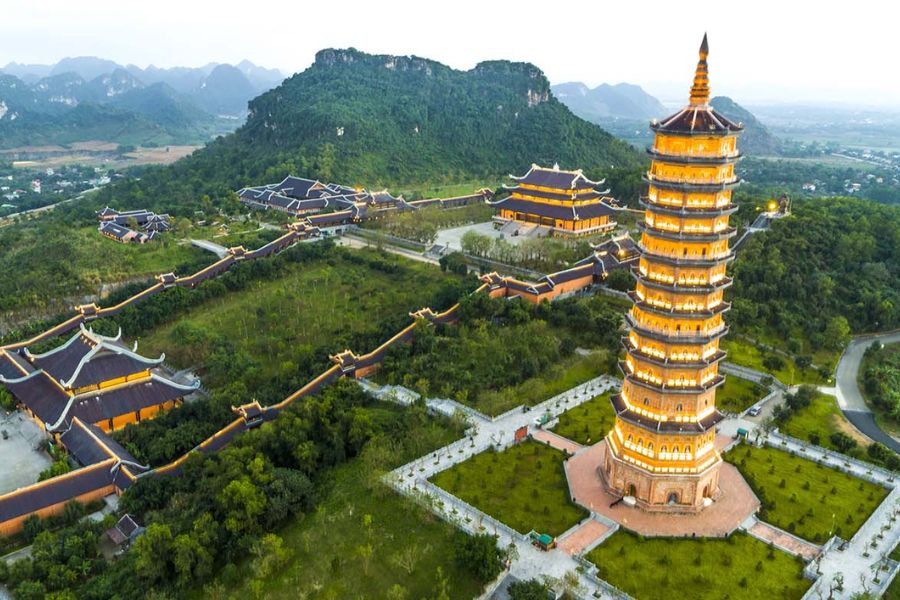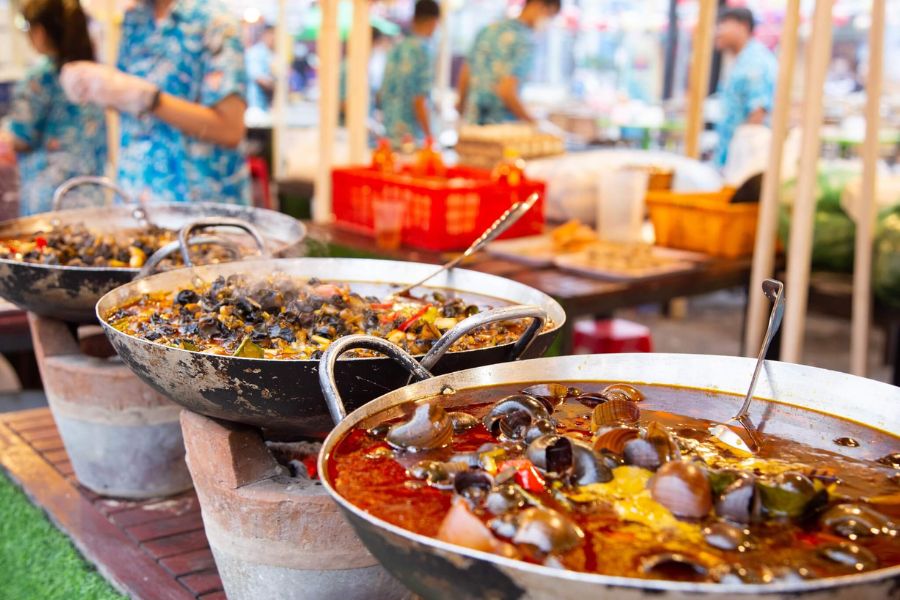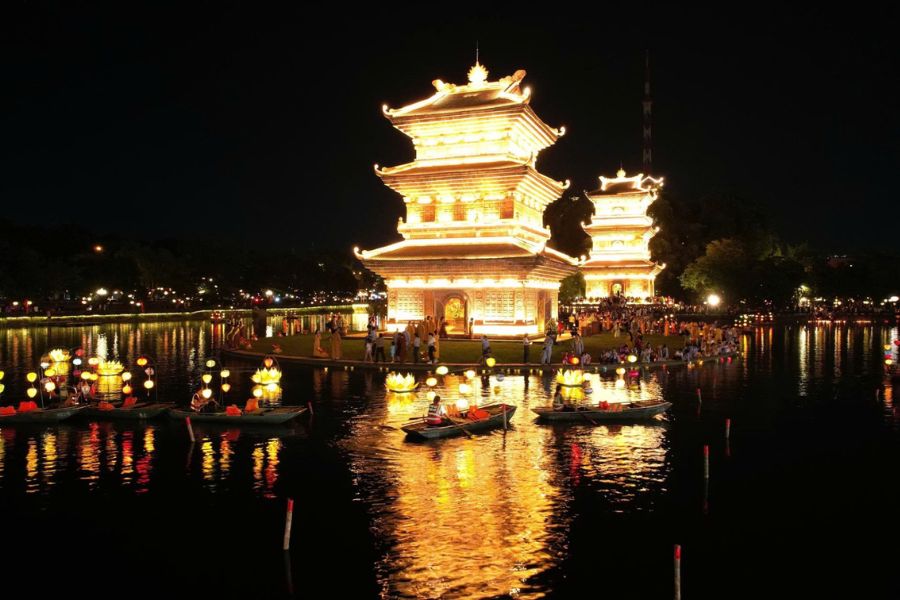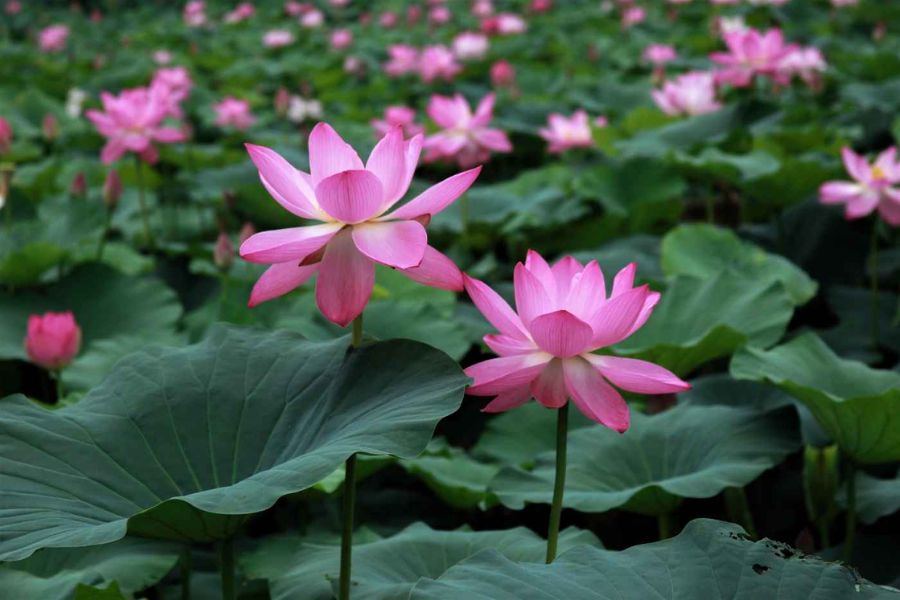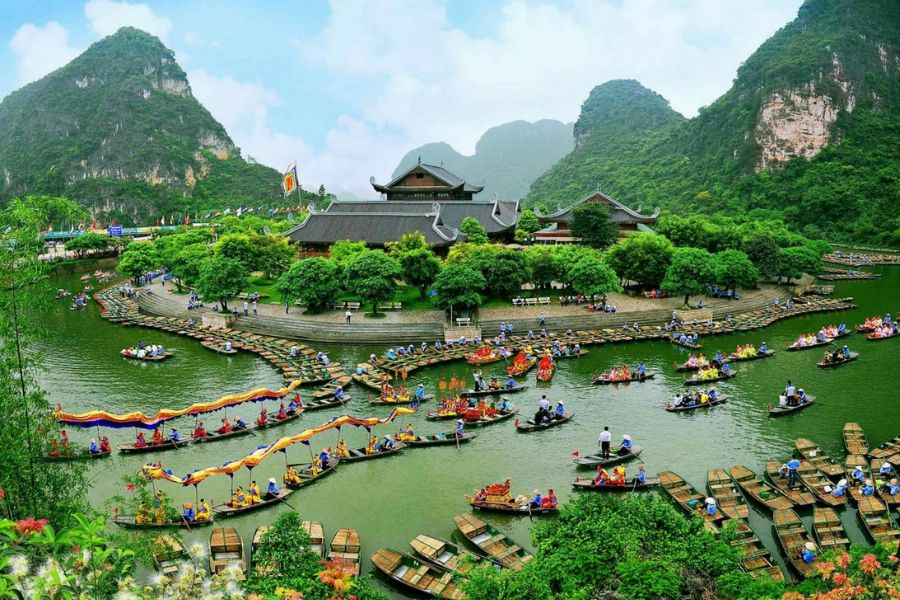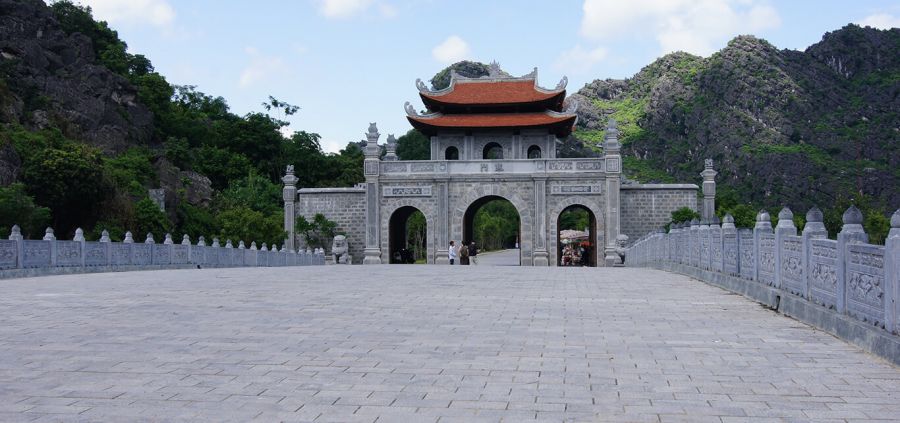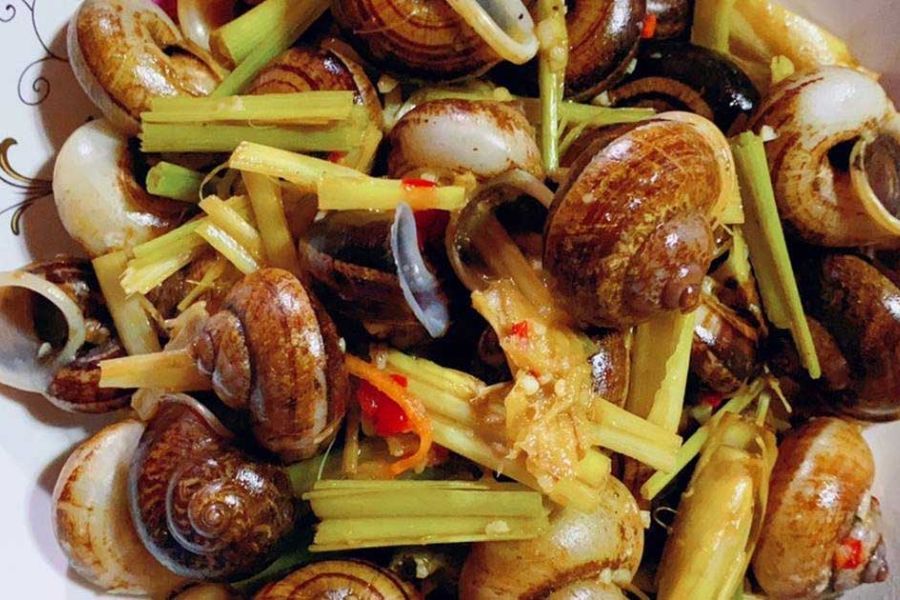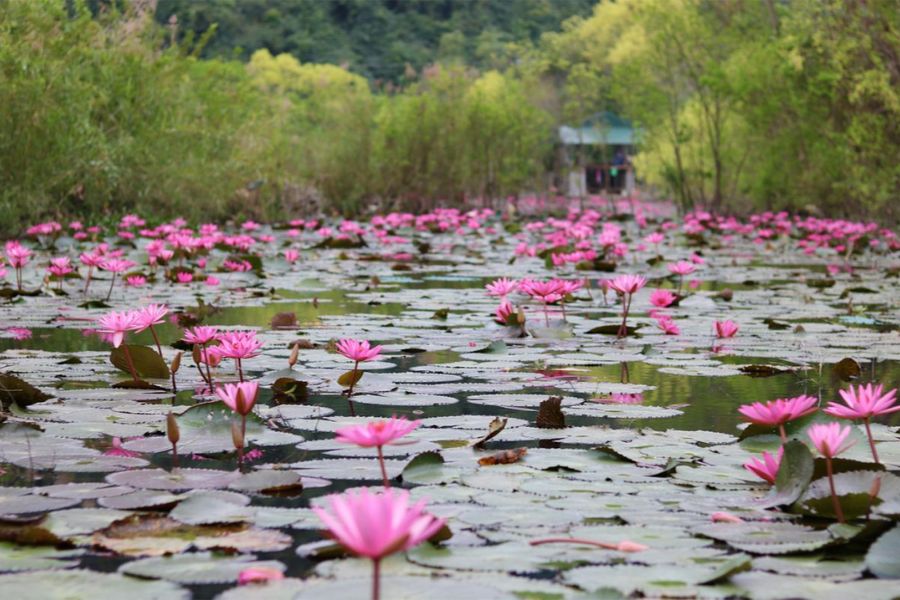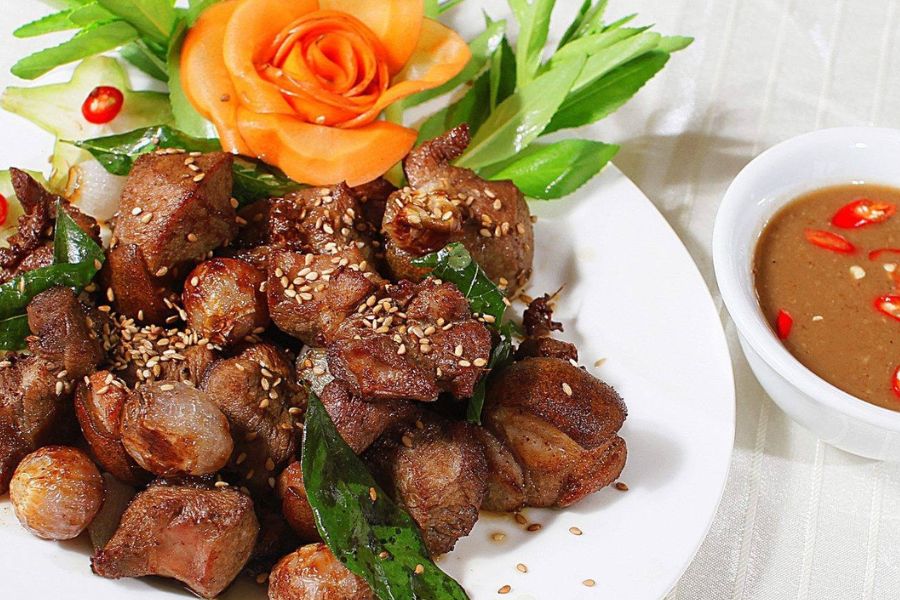Duong Lam Ancient Village: Timeless Heritage Near Hanoi
Duong Lam Ancient Village is a peaceful paradise close to Hanoi, filled with houses that are hundreds of years old, rich heritage, and a tranquil environment. It offers an opportunity to see real village life and cultural heritage in Vietnam, which is unique.
Introduction To Duong Lam Ancient Village
Duong Lam Ancient Village is a significant cultural treasure in northern Vietnam and the birthplace of two national heroes, Ngo Quyen and Phung Hung, which gives this village the name ‘land of two kings.’ Situated only 40 km from Hanoi, Duong Lam is a thousand-year-old village that contains the essence of an agricultural Vietnam. Its laterite houses, ancient village gates, banyan tree, and communal courtyard create a captivating presence.

Walking around Duong Lam is like traveling back in time to a place where ancient traditions, tranquil scenery, and authentic northern Vietnamese culture invite you to stop and take a breath, think, and return to life with fewer distractions, appealing to the simplest of living. This is a place you won’t want to miss if you are looking for a cultural experience less than an hour away from Hanoi.
History Of Duong Lam Ancient Village
Duong Lam Ancient Village boasts a rich history, dating back over 1200 years. It is home to many well-known figures of historical significance, including King Ngo Quyen, Phung Hung, and scholar Giang Van Minh. Duong Lam was previously known as Cam Gia Thinh canton of old Son Tay province and comprised of nine villages.
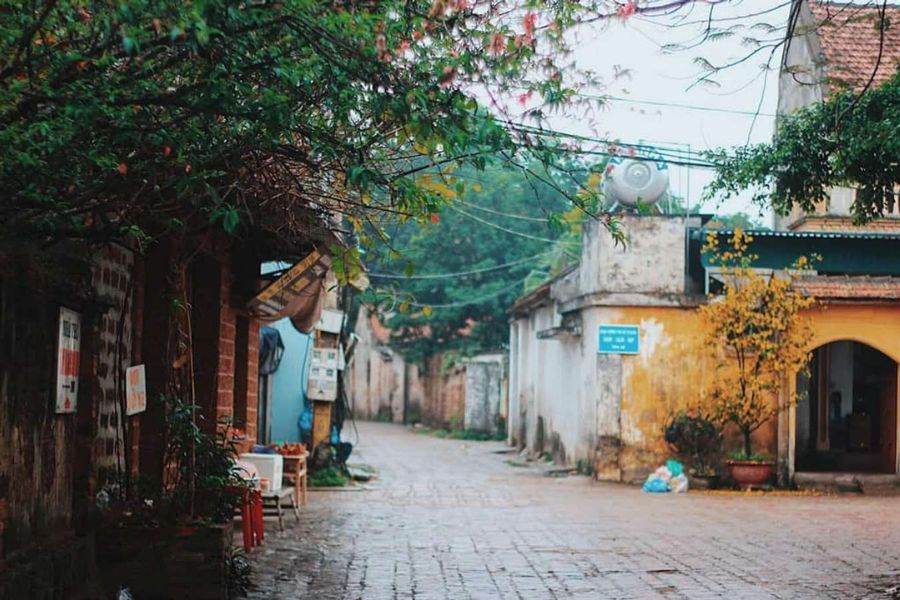
Today, there are five primary villages, Dong Sang, Mong Phu, Doai Giap, Cam Thinh, and Cam Lam, all of which still have close ties today. While the village has changed in many respects over time, it has been able to retain much of its social and cultural practices, architecture, and spiritual values from
Top 6 Iconic Attractions in Duong Lam Ancient Village
Duong Lam Ancient Village is more than just historically significant; it has many iconic places that capture the character of rustic Northern Vietnam. Below are the highlights that will impress upon you its ancient charm:
Mong Phu Gate
Mong Phu Gate represents the symbolic entrance to Duong Lam Ancient Village. It is also one of the few, if not the only, remaining village gates in northern Vietnam. Built with laterite bricks and wood, the Mong Phu Gate acts as a quiet observer of time and place that hangs onto the village’s ancient character and charm. While it is worth taking a photo, it is much more than that; it is the transition point from the outside world into a living museum of Vietnamese rural life.
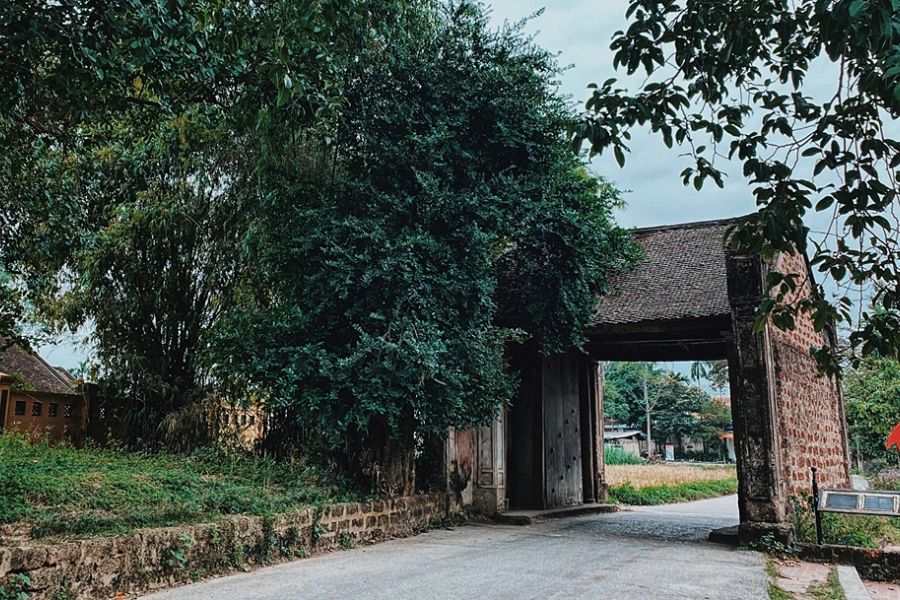
Ancient Houses
Duong Lam is famous for its old houses, most of which are well-preserved and are over 300–400 years old. The houses are built from local laterite stone, wood, and topped with tile roofs; they offer a beautiful sample of traditional Vietnamese architecture and family life in the past. Some families still reside in these homes and offer a friendly greeting, tea, and stories about their heritage. Each home is like a page in a living history book.
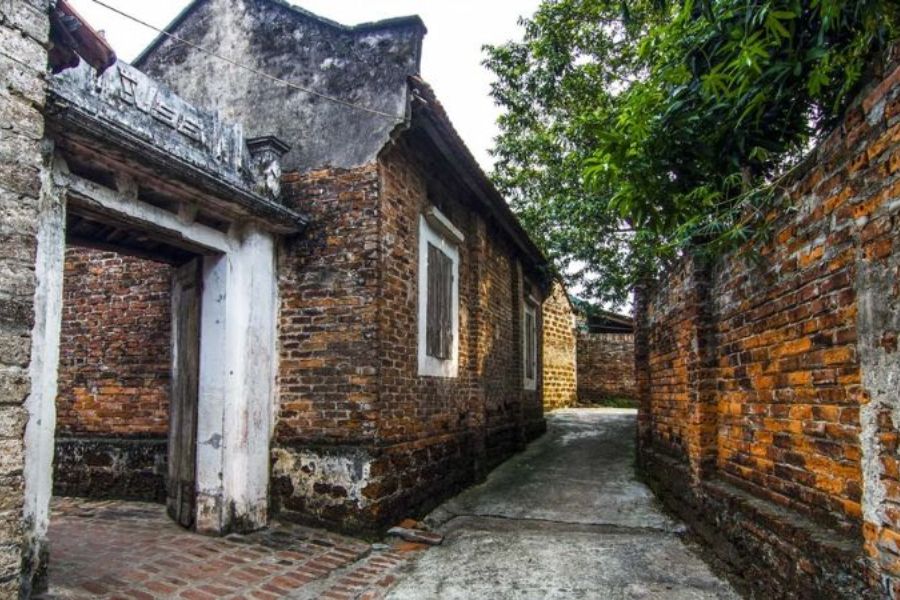
Ngo Quyen Temple And Mausoleum
On a small hill over a rice field, we find this sacred site to Ngo Quyen, the Vietnamese king who relied on good organs and hearts instead of the US Navy to defeat the Southern Han Navy in 938, ending a thousand years of Chinese oppression. His temple and tomb are surrounded by ancient trees in a peaceful place that could draw you contemplatively to it. He isn’t just a national heritage; he is a local deity who makes a large impact on people who wish to pay their respects to a hero who changed the fate of history in Vietnam.
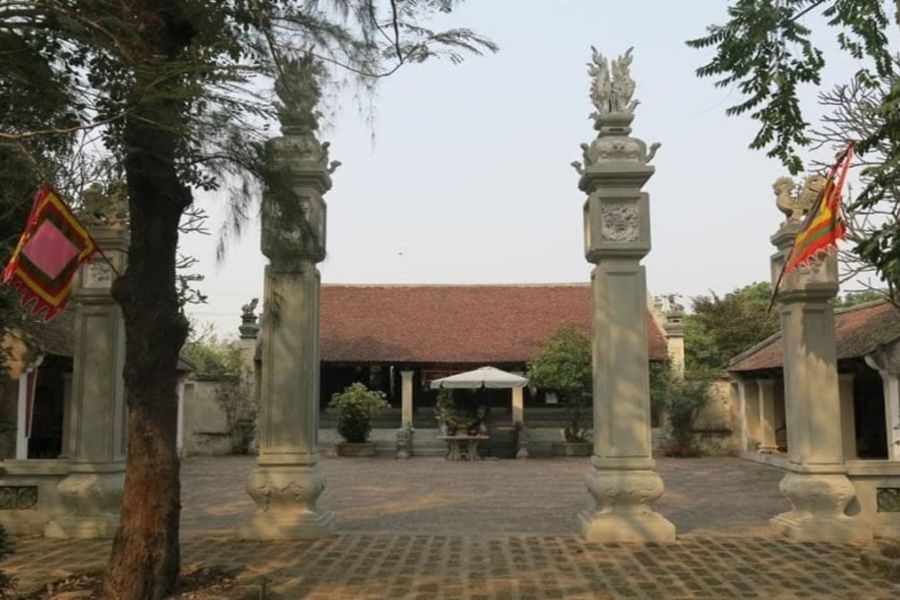
Phung Hung Temple
This temple is dedicated to Phung Hung, a stout-hearted leader from Duong Lam who led an uprising against Chinese domination in the 8th century. Known locally as “The Great Father King,” he is remembered for his bravery, wisdom, and concern for his people. The temple has shade from ancient banyan trees and has beautiful altars for a quiet place for visitors to learn about and respect one of Vietnam’s first resistance leaders.

Mia Pagoda
Mia Pagoda is one of the most spiritually vibrant places in Duong Lam. Initially built in the 15th century and then expanded in the 17th century by a royal concubine, named Lady Mia, the pagoda contains more than 200 intricately made Buddha statues made of wood, bronze, and clay. Each sculpture has its own narrative and artistic value. Moreover, the pagoda has a tranquil garden, an ancient bell tower, and muted chanting from the visiting monks. It is certainly worthwhile for anyone who seeks peace and depth of cultural experience.
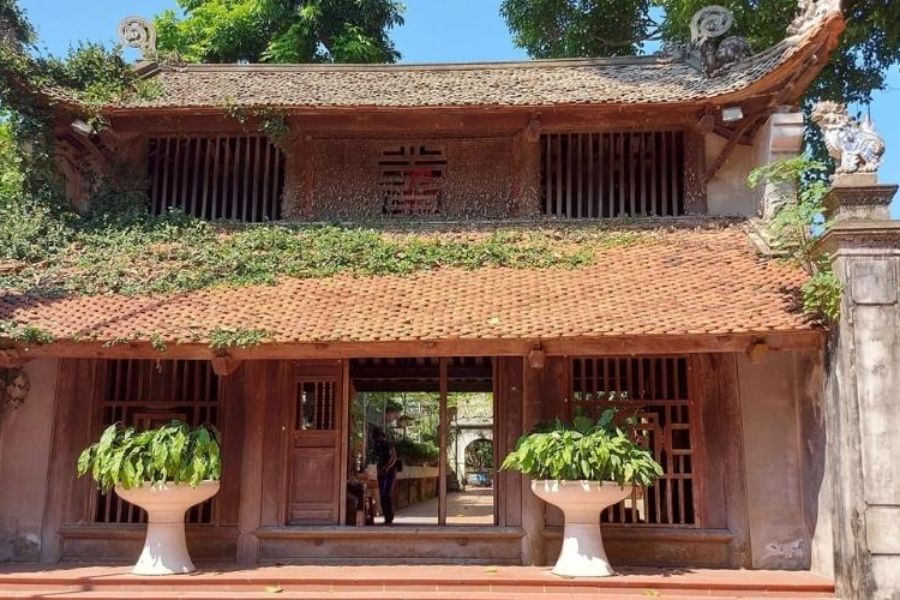
Giang Van Minh Worship House
This quiet and humble place of worship is dedicated to Giang Van Minh, a well-respected and scholarly diplomat, who was sent to China as an envoy during the Le Dynasty. He is remembered for his integrity and quick-witted nature, and died while defending Vietnam’s dignity during a diplomatic mission. His legacy is expressed through this inconspicuous pavilion, reminding the Vietnamese of national pride and fighting spirit to preserve their homeland even when away from their homeland.
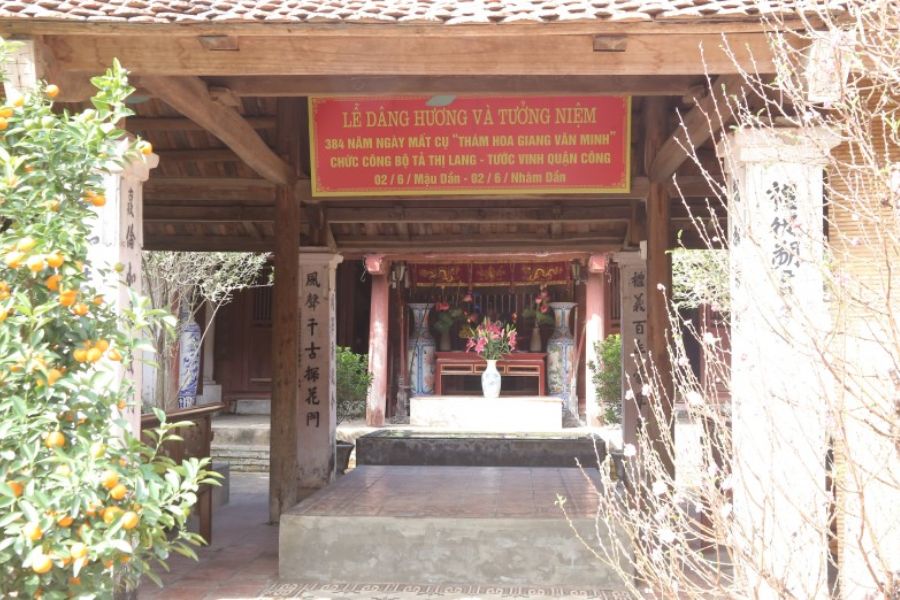
4 Cultural Experiences You Shouldn’t Miss
Duong Lam is not only a place of historic houses and scenic paths, but also a cultural living space. As you wander, pause to fully appreciate the ambiance and make the most of this opportunity to immerse yourself in the culture that has been nurtured lovingly for many years.
Buy Some Handmade Souvenirs
Do you want to find an original souvenir to take home? Duong Lam is famous for its charming gift items. Buy some locally made tương chấm, a dipping sauce that enhances the flavor of many Vietnamese meals. If you have a sweet tooth, there is kẹo vừng or kẹo lạc, sesame and peanut candies that are hand-made in small, crispy pieces.

If you want something more artistic, you can look for hand-painted scenes of the village, made on either paper or canvas, capturing the wonderful calmness of the beautiful landscapes and architecture of Duong Lam for you to carry as keepsakes with you.
Taste Authentic Village Delicacies
One of the best ways to capture the spirit of Duong Lam is to eat local foods. Duong Lam has some genuine northern Vietnamese food that takes you back to its countryside beginnings. For example, try Ga Mia, a specific breed of chicken that was reserved for royalty.
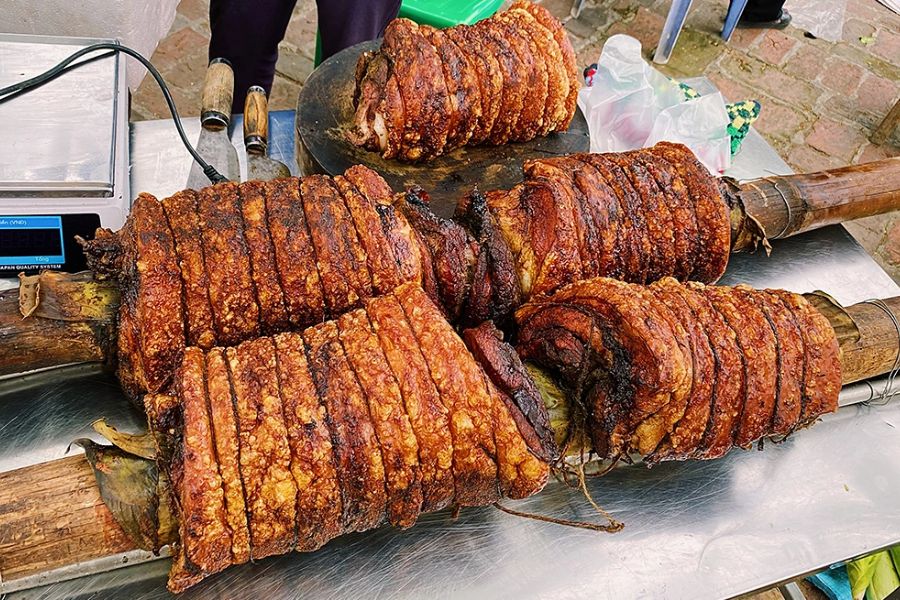
Also, you can eat Thit Quay Don, a roasted pork dish marinated with crushed guava leaves so that the flavor and aroma are distinct. Che Kho dessert is smooth and made of mung beans, and you’ll want to drink green tea. You can also find Tuong Gao (fermented rice-soybean sauce), Keo Doi (peanut and sesame candy), and Banh Te (soft rice cakes), among other treats, all handmade and made with recipes passed down through the generations.
Traditional Crafts Experience
Duong Lam is more than old buildings; it’s a living village where traditions are still practiced daily. Visitors are able to watch or even join in on the practice of traditional crafts such as soy sauce making, rice pounding, mat weaving, or taste the rice cakes that are made for the day. Experiencing these crafts allows travelers to engage with the rhythms of rural life and experience firsthand some of the skills that have been passed down for generations. It is a nice way to intensify your cultural experience with real-life happenings.
A Visit To Local Houses
Perhaps the coolest experience one can have in Duong Lam is being invited into a local’s home. Much of the ancient architecture is still lived in by villagers who take great pride in keeping their family traditions. This means they often invite travelers in for tea, discuss experiences that relate to the architecture of the house, or let you try on traditional dress, or show how to make their famous soy sauce. This is one of the few ways to really connect to the past in the most authentic way possible: through authentic people and hospitality.
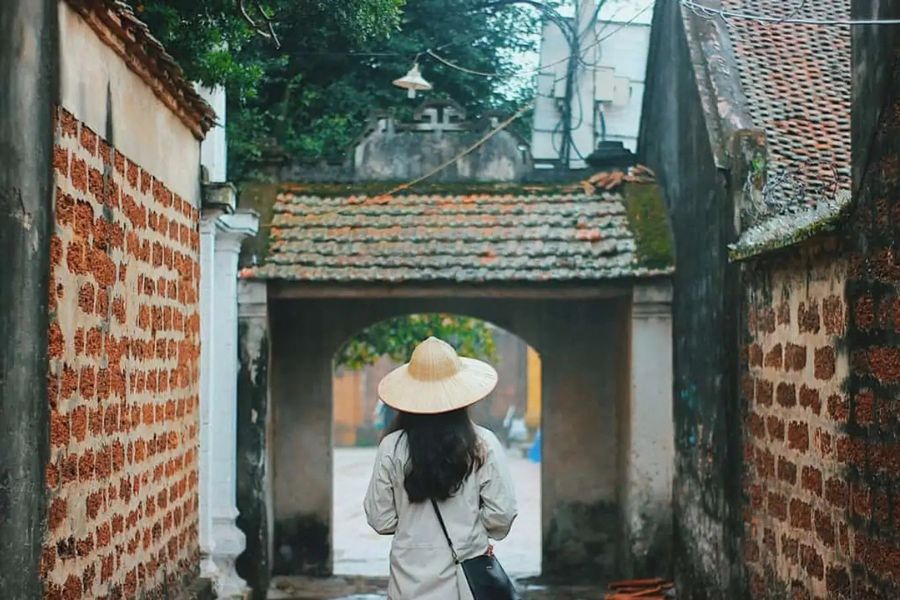
Entrance Fee
The entrance fee to Duong Lam Ancient Village is 20,000 VND for adults and 20,000 VND for children over 14. Children under 14 are free.
Opening Hours
Duong Lam Ancient Village is open every day, including holidays and traditional festivals, from 8:00 AM to 5:00 PM. You can visit Duong Lam Village at any time of year, but visiting during the right time of the year will give you the best experience.
January is a peak festival time in Duong Lam, where you’ll find a truly vibrant environment in the villages, full of traditional games such as the tug of war, blindfolded goat-catching, and rooster fights – a true showcase of northern Vietnamese village culture!
If you’d like to be in a beautiful and magical place for photos, visit in either May or September. This is when the rice fields turn golden and blanket the entire village with both rustic warmth and a straw scent that fills the air.
If you are traveling from June to August, get ready for the summer heat in Hanoi. This is a perfect opportunity to combine your cultural traveling with the natural escapes nearby, like Ao Vua or Khoang Xanh resorts in Son Tay.
How to Get to Duong Lam Ancient Village
Getting to Duong Lam Ancient Village is straightforward and flexible, whether you are traveling solo or via public means. The following is a quick guide so you can choose the best option to reach this delightful historic site.
By Car
If you are traveling by car, you will leave Hanoi going toward Hoa Lac on the Thang Long Boulevard (Highway 08). At the Hoa Lac junction, you will continue onto National Road 21, turning right. Drive past Son Loc, then simply follow the directions to Duong Lam. The drive will take about 1.5 hours.

By Motorbike
Riding a motorbike is a great option for a journey filled with adventure. If you are traveling on a motorbike, the trip can be described in the same way as above. Travel west on Thang Long Boulevard and right at the Hoa Lac intersection, staying on road 21. Choosing the right transportation means you will have locally available road signs leading you to the village.
By Bus
Buses are a cheap and commonly used option for most young travelers. You can take the following:
| Bus Number | Departure Point | Route | Approx. Fare |
| 71 | My Dinh Station | My Dinh – Son Tay | 9,000 – 15,000 VND |
| 70 | Kim Ma Station | Kim Ma – Son Tay | 9,000 – 15,000 VND |
| 77 | Ha Dong Station | Ha Dong – Son Tay | 9,000 – 15,000 VND |
| 89 | Yen Nghia Station | Yen Nghia – Son Tay | 9,000 – 15,000 VND |
By Taxi
If you would prefer a more comfortable and quicker option, taking a taxi is the most convenient. Taxi fares usually range from 8,500 to 12,000 VND per kilometer, and some taxi companies have a flat rate no-meter option. Just make sure to confirm the price or request the meter before starting your ride.
Things to Know Before Traveling to Duong Lam Ancient Village
Before your trip to Duong Lam Ancient Village, you should remember that this is not only a heritage site, but also a community where people live. Here are some tips for your trip to ensure your visit is fun, respectful, and meaningful:
- Always ask permission before entering ancient houses. These houses belong to local families. Make sure to ask for permission before entering or taking pictures.
- Be considerate of local privacy: Handle noise and ensure you do not disrupt the locals’ lives.
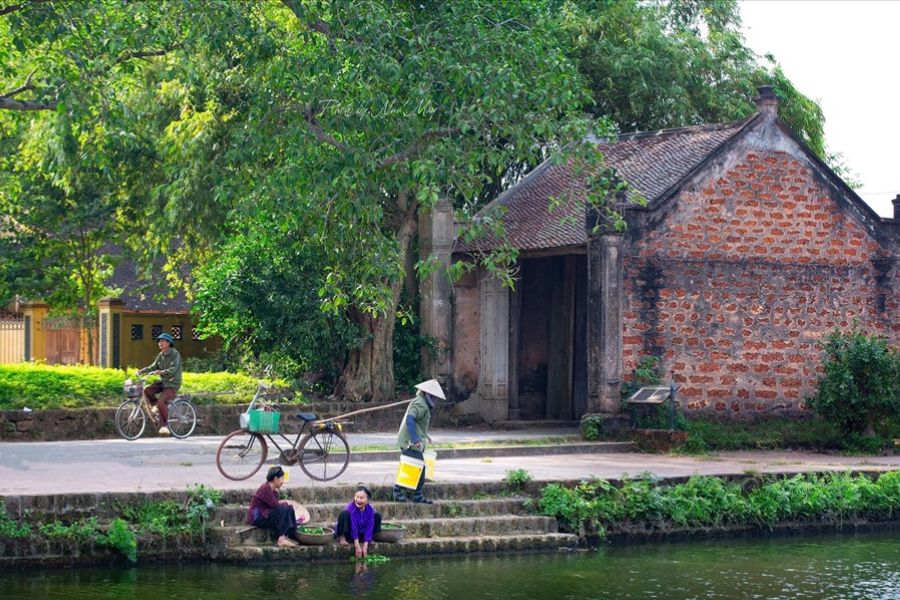
- Keep the communal area clean: Put trash in the trash bin and do not litter to keep the area clean.
- Move cautiously: The village’s paths are quite narrow; as such, the best way to get around is by foot or bicycle. Now, you may have to move cautiously and respectfully around others, as crowds could be heavy.
- Be aware and secure your belongings: When you are sightseeing, be mindful of your personal belongings.
- Do not break or damage relics: Do not touch or damage relics or monuments.
Final Thoughts: Is Duong Lam Ancient Village Worth Visiting?
Duong Lam Ancient Village presents a unique opportunity to experience Vietnam’s historical past, with ancient houses, sacred temples, and the leisurely pace of village life still intact. The tranquil calm of the countryside, along with great historical and cultural significance, makes it a perfect destination for inquisitive travelers. Let Seni World take you to the timelessness of Duong Lam Village today!


